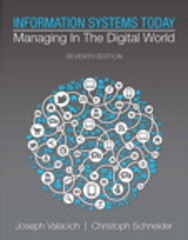Question
1. The LMX (Leader Member Exchange Theory) contends that subordinates fall in to either the in-group or the out-group. This is obviously not about a
1. The LMX (Leader Member Exchange Theory) contends that subordinates fall in to either the in-group or the out-group. This is obviously not about a popularity contest. What does this concept mean when relating to the LMX theory?
2. Describe two strengths and two weaknesses of the Skills Approach to leadership.
3. The Style Theory is also referred to as the Behavioral theory. Why?
4. Explain the meaning of the leadership "grid".
5. The Trait Theory of leadership contends that leaders are both born and made. What does this mean and what does the research suggest regarding how many of our leadership skills are innate and how many are learned?
6. What is the overall premise of the situational theory/model?
7. What leadership approach is considered the most dominant among the styles and why?
8. What is the difference between "generalized cognitive ability" and "crystalized cognitive ability" based on the Skills Approach?
9. Based on the Plachy article in week one, what is the overall message regarding leadership and management?
10. The Skills Model of leadership outlines three "skills" needed for top management, middle management and supervisory management. Describe the three skills and explain when they are needed in the three levels of management.
Step by Step Solution
There are 3 Steps involved in it
Step: 1

Get Instant Access to Expert-Tailored Solutions
See step-by-step solutions with expert insights and AI powered tools for academic success
Step: 2

Step: 3

Ace Your Homework with AI
Get the answers you need in no time with our AI-driven, step-by-step assistance
Get Started


